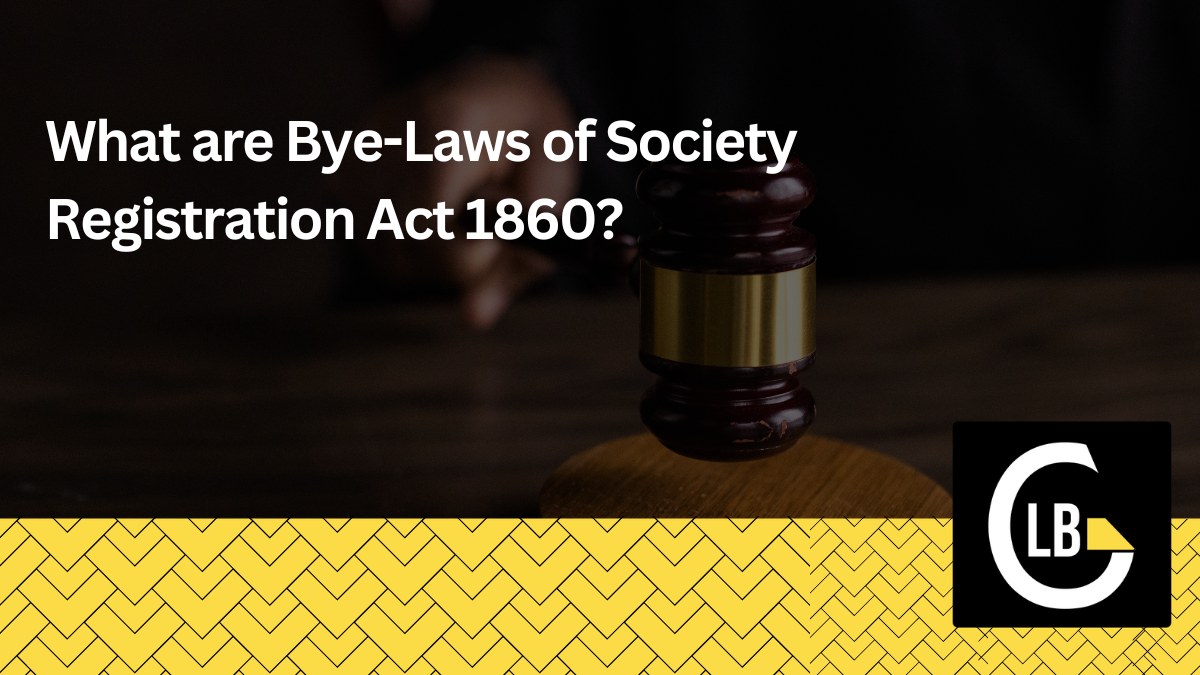Societies are essential in driving charitable work, including activities like sports, the arts, and community services. The Society Registration Act of 1860 provides a legal framework for forming and running these societies, with bye-laws being a crucial part of the process. These bye-laws guide the society’s structure, decision-making, and governance. Here’s a look at what bye-laws are and why they are important under the Society Registration Act, 1860.
What Are Bye-Laws?
Bye-laws are the internal rules that a society follows. They outline how the society will operate, covering areas such as membership, management, financial handling, and internal processes. Bye-laws serve as a blueprint for the society, ensuring smooth and transparent operations.
Key areas covered by bye-laws include:
- Membership Rules: Who can join, their rights, and their duties.
- Management Structure: Roles and responsibilities of leaders and committees.
- Meeting Guidelines: How meetings are conducted and decisions made.
- Financial Policies: Handling of funds, audits, and reporting.
- Amendment and Dissolution Procedures: How to make changes to the bye-laws and dissolve the society if needed.
Why Are Bye-Laws Essential?
Bye-laws under the Society Registration Act, 1860, are critical for several reasons:
- Clear Operations: They provide a clear structure for how the society functions.
- Conflict Resolution: Bye-laws act as a guide for resolving any disputes within the society.
- Transparency: They outline the responsibilities of all members, ensuring everyone is aware of their roles.
- Preventing Abuse: By setting rules, they help prevent individuals from exploiting their positions within the society.
- Efficient Management: Bye-laws offer a framework for handling essential issues like fund allocation and legal matters, ensuring decisions are made within legal boundaries.
Creating and Implementing Bye-Laws
Developing bye-laws that are effective and compliant with the Society Registration Act requires careful planning. Here are the basic steps:
- State the Purpose: Clearly define why the society exists and align the bye-laws with these goals.
- Choose Key Members: Appoint individuals who will be responsible for drafting the bye-laws and, if necessary, consult legal experts.
- Structure the Bye-Laws: Include all the crucial elements such as membership rules, management roles, meeting procedures, and financial policies.
- Address Specific Issues: Incorporate additional provisions specific to the society, such as penalties for rule violations.
- Tailor to Your Needs: Each society is unique, so the bye-laws should be tailored to reflect the specific requirements of the organisation.
Changing the Bye-Laws
Societies may need to amend their bye-laws as they grow or encounter new challenges. The Society Registration Act, 1860 outlines a process for making these changes:
- Hold a General Meeting: Changes to the bye-laws must be discussed and approved by a majority of members.
- Registrar’s Approval: In some cases, especially if changes affect the Memorandum of Association, approval from the Registrar is required.
- Submit Documents: The society must submit the amended bye-laws along with resolutions passed during the meeting to the Registrar.
- Registrar Review: The Registrar reviews the proposed amendments to ensure they comply with the Act before issuing an approval.
Conclusion
The bye-laws formed under the Society Registration Act, 1860, are vital to the smooth and legal operation of any society. They provide structure, ensure accountability, and offer a way to handle internal and legal challenges. Whether a society is drafting new bye-laws or amending existing ones, it’s important to involve members and follow the legal procedures outlined in the Act.
